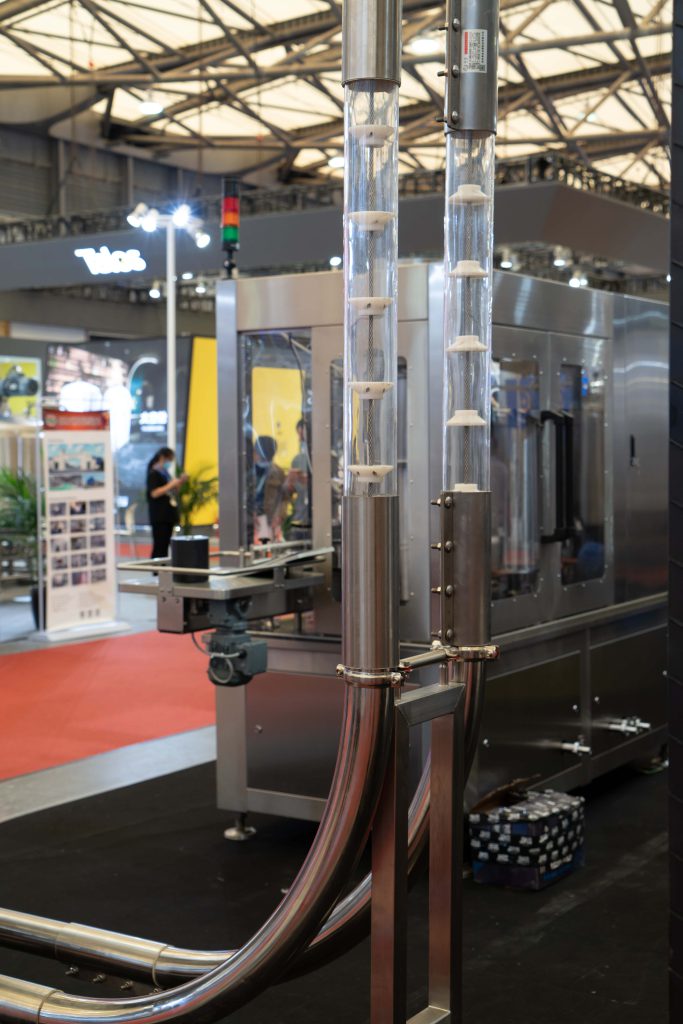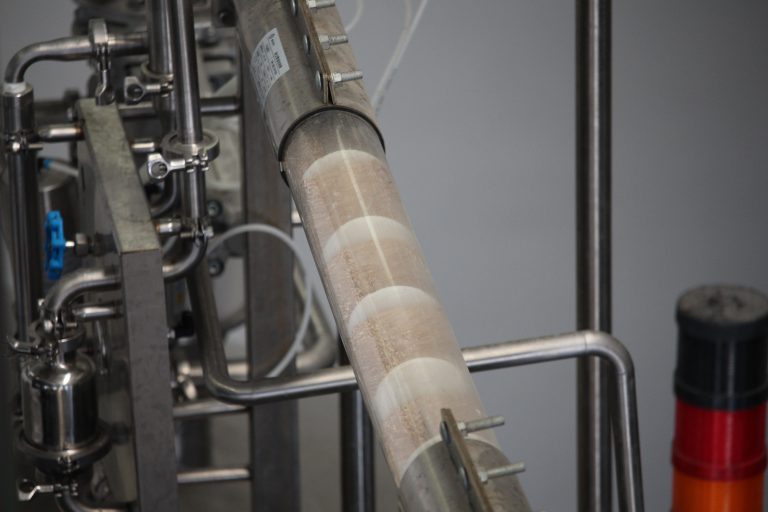Введение

Automated material conveyor systems have transformed industrial logistics, offering efficient and reliable transportation of materials within production facilities. These systems utilize advanced technology to streamline operations, enhance productivity, and meet the demanding requirements of modern manufacturing and distribution environments.
Key Benefits of Automated Material Conveyor Systems
Повышенная эффективность
Automated material conveyor systems are pivotal in boosting operational efficiency. By automating the movement of materials, these systems reduce reliance on manual handling, which not only speeds up processes but also minimizes errors. Consistent throughput rates are achieved, ensuring that production lines operate smoothly without bottlenecks or delays. This efficiency translates into improved overall productivity and resource utilization.
Улучшенная безопасность
Safety is a primary concern in industrial settings, where heavy machinery and materials pose potential risks to workers. Automated conveyor systems mitigate these risks by minimizing human involvement in material handling processes. Advanced sensors and automated controls ensure safe operation by detecting obstacles, controlling speed, and preventing collisions. This proactive approach significantly reduces the likelihood of accidents and injuries, fostering a safer work environment for all personnel.
Экономия затрат
Implementing automated conveyor systems leads to substantial cost savings over time. While initial investments may be significant, the long-term benefits outweigh the costs. By optimizing material flow and reducing the need for manual labor, businesses can lower operational expenses, including labor costs and the associated overhead. Moreover, these systems require less maintenance compared to traditional conveyor setups, thanks to built-in diagnostics and predictive maintenance capabilities that minimize downtime and repair costs.
Enhanced Accuracy
Precision is paramount in manufacturing and distribution processes to ensure quality control and customer satisfaction. Automated material conveyor systems excel in delivering high accuracy in material handling and tracking. Barcode scanning, RFID technology, and integrated software systems enable real-time inventory management and order tracking, minimizing errors in picking, packing, and shipping operations. This level of accuracy not only improves operational efficiency but also reduces waste and enhances overall supply chain management.
Гибкость и масштабируемость
Modern automated conveyor systems are designed with flexibility and scalability in mind. They feature modular components and configurable layouts that can adapt to changes in production demands and facility layouts. This flexibility allows businesses to expand or reconfigure their operations without major disruptions, accommodating new product lines, increased throughput requirements, or changes in workflow processes. Scalable designs ensure that investments in conveyor systems remain viable as businesses grow and evolve over time.
Integration with IoT and Industry 4.0
The integration of automated material conveyor systems with IoT technologies and Industry 4.0 principles revolutionizes industrial automation. These systems become part of interconnected networks where data-driven insights drive operational efficiencies and informed decision-making. IoT-enabled sensors collect real-time data on system performance, material flow, and operational conditions. Advanced analytics and predictive maintenance algorithms optimize system uptime, energy efficiency, and overall equipment effectiveness (OEE), contributing to enhanced productivity and profitability.
Экологическая устойчивость
Efficient material handling is crucial not only for operational efficiency but also for environmental sustainability. Automated conveyor systems contribute to sustainability goals by optimizing energy usage and minimizing material wastage. Energy-efficient motors, variable speed drives, and intelligent routing systems reduce the carbon footprint of industrial operations. Furthermore, by enhancing inventory management and reducing overproduction, these systems support sustainable manufacturing practices and compliance with environmental regulations.
Features of automatic material conveying system

This table provides a brief overview of different types of automated material conveyor systems, each designed to address specific logistical challenges in industrial settings.
| Conveyor System Type | Описание |
|---|---|
| Pneumatic Tube Systems | Utilizes air pressure to transport small items or documents through tubes in a controlled manner. |
| Overhead Conveyor Systems | Suspended from ceilings or elevated structures, ideal for transporting heavy or bulky materials. |
| Spiral Conveyor Systems | Vertical conveyor systems that move materials in a spiral path, suitable for continuous elevation changes. |
| Magnetic Belt Conveyor Systems | Uses magnets to move materials along a conveyor belt, useful for handling ferrous materials or items sensitive to sliding. |
Заключение
Автоматизированный material conveyor systems represent a cornerstone of modern industrial operations, offering a plethora of benefits from enhanced efficiency and safety to cost savings and environmental sustainability. As technology continues to evolve, these systems will play an increasingly crucial role in optimizing material flow and supporting the growth of diverse industries.
Часто задаваемые вопросы
Q: What industries benefit most from automated material conveyor systems?
A: Industries such as automotive manufacturing, food processing, logistics, and pharmaceuticals benefit greatly from the efficiency and reliability of automated conveyor systems.
Q: How do automated conveyor systems contribute to sustainability?
A: By optimizing material flow and reducing energy consumption, automated systems help minimize environmental impact and support sustainable practices in manufacturing and distribution.
В: Автоматизированы? material conveyor systems expensive to maintain?
A: Initially, there may be higher setup costs, but automated systems typically have lower maintenance costs due to proactive monitoring and predictive maintenance features.
Q: Can automated conveyor systems handle different types of materials?
A: Yes, modern systems are designed to handle a wide range of materials, from small components to heavy items, with customizable configurations to suit specific needs.

